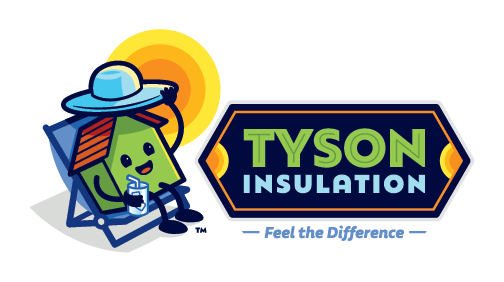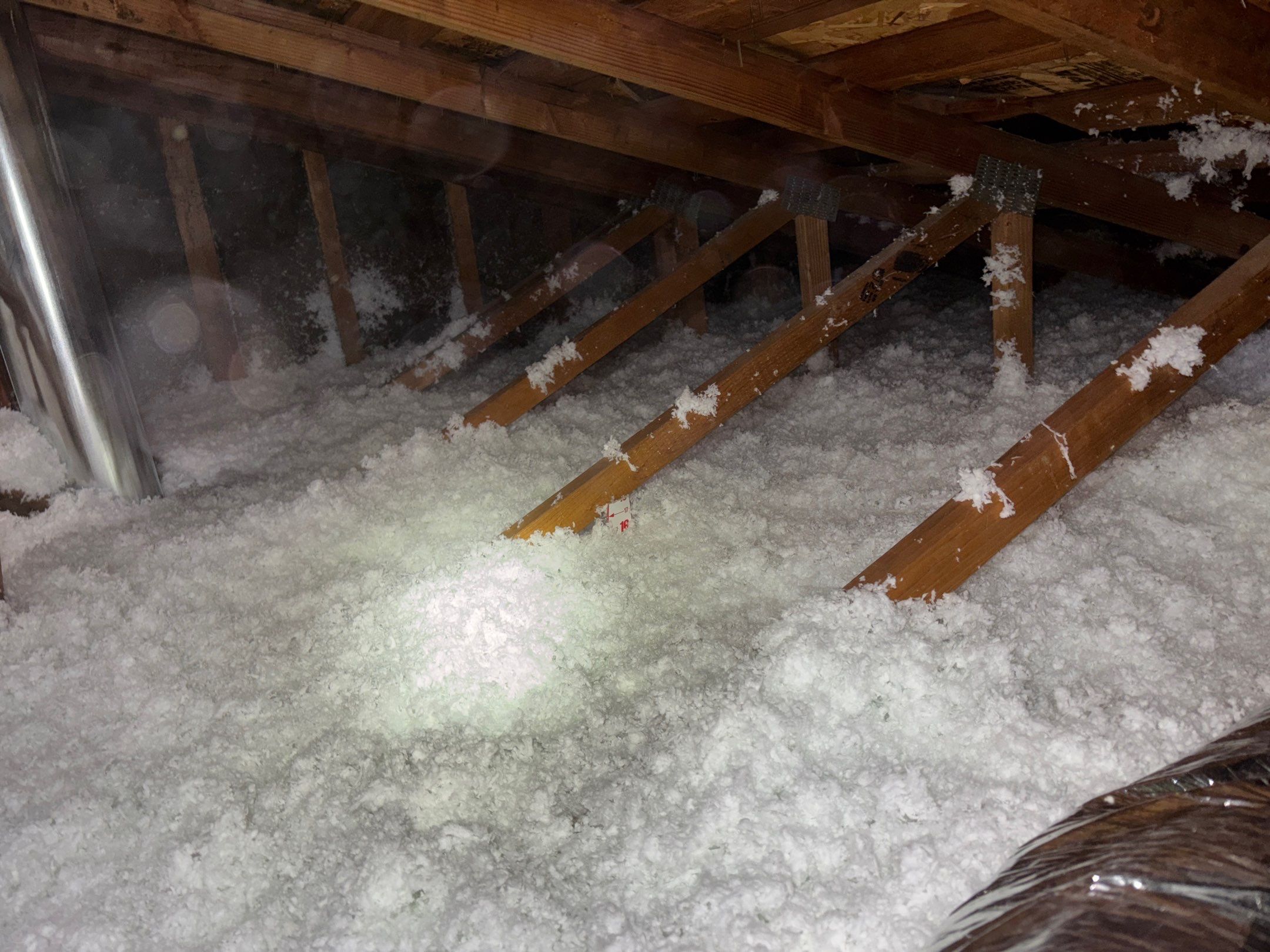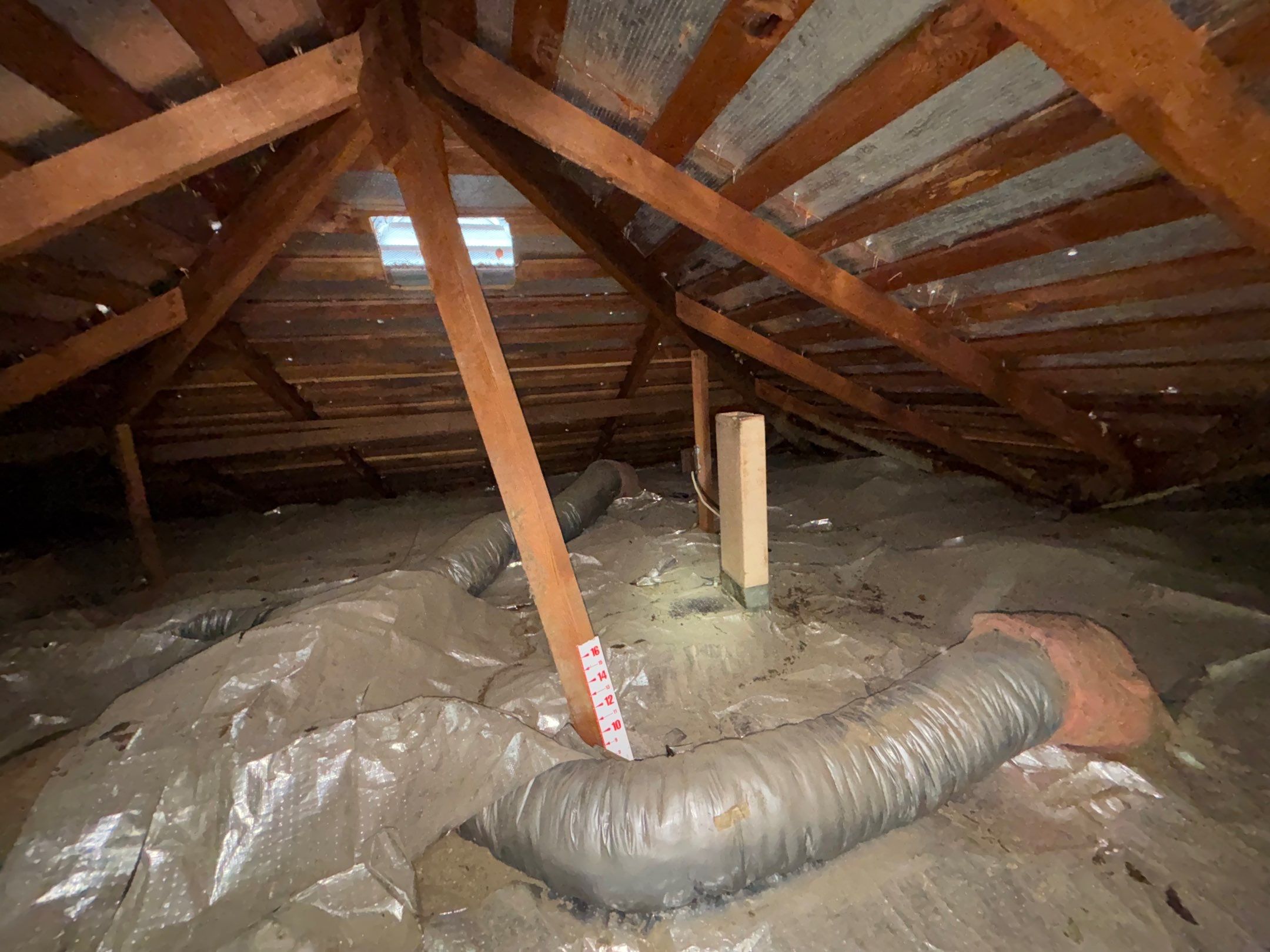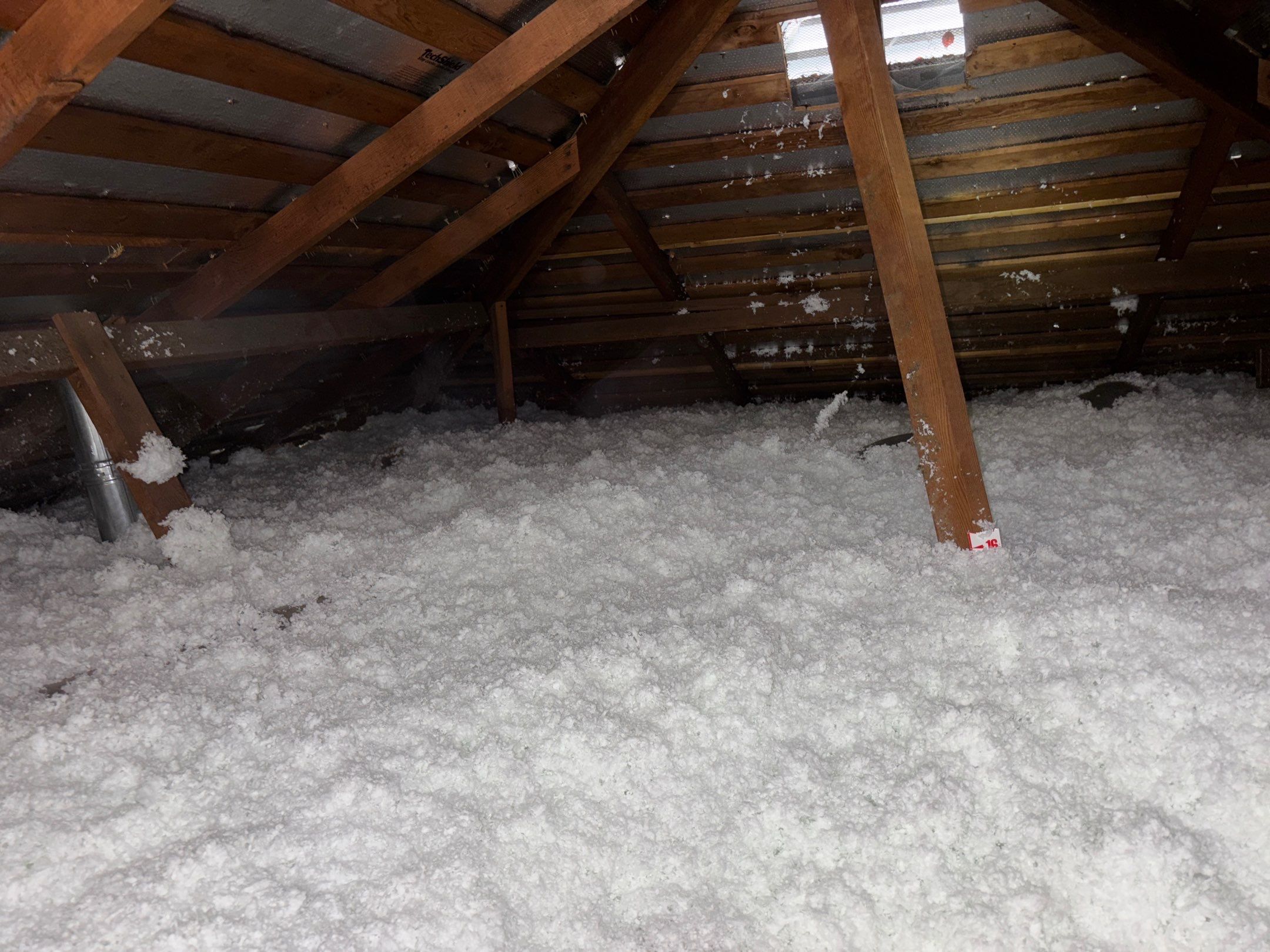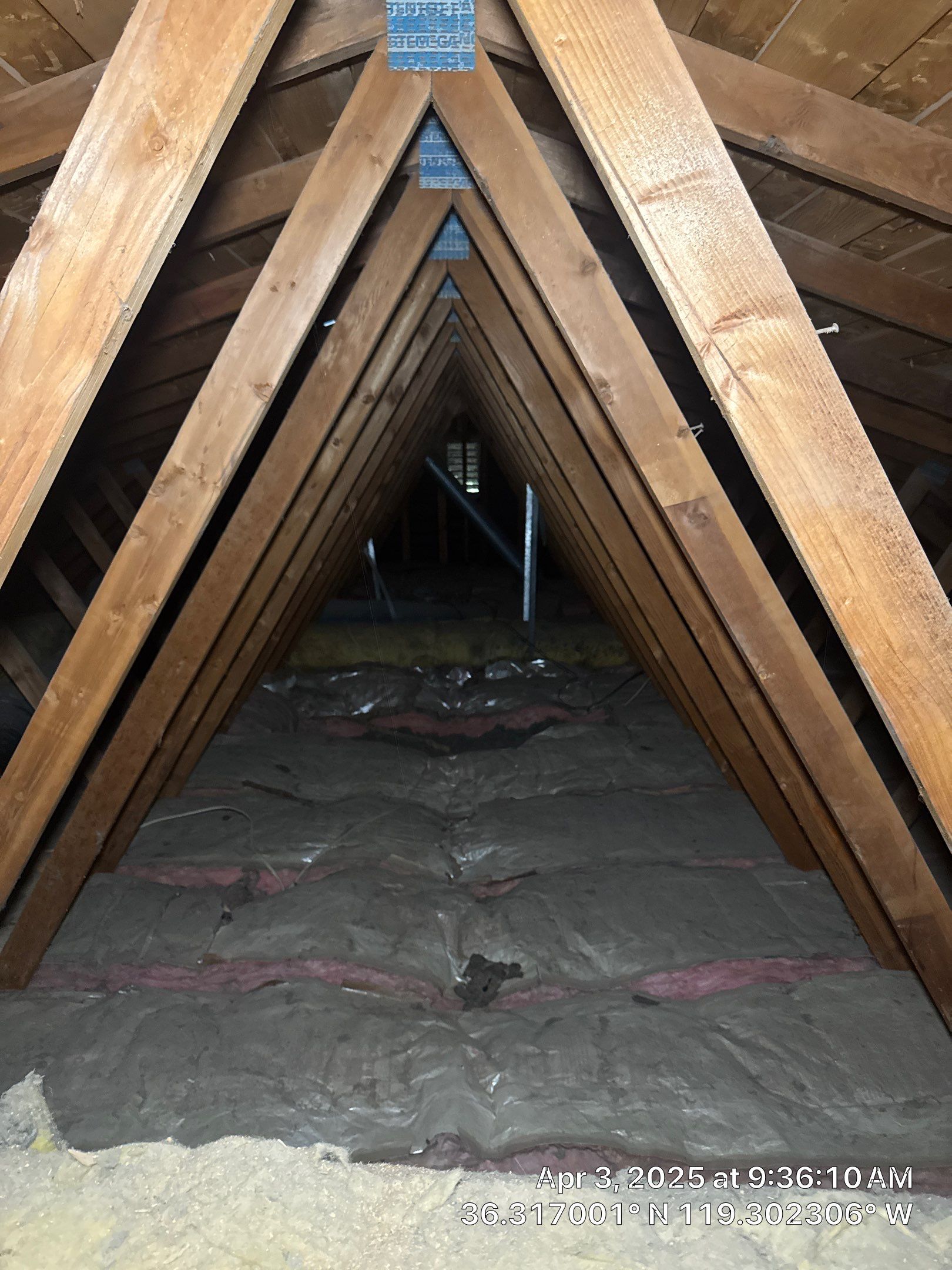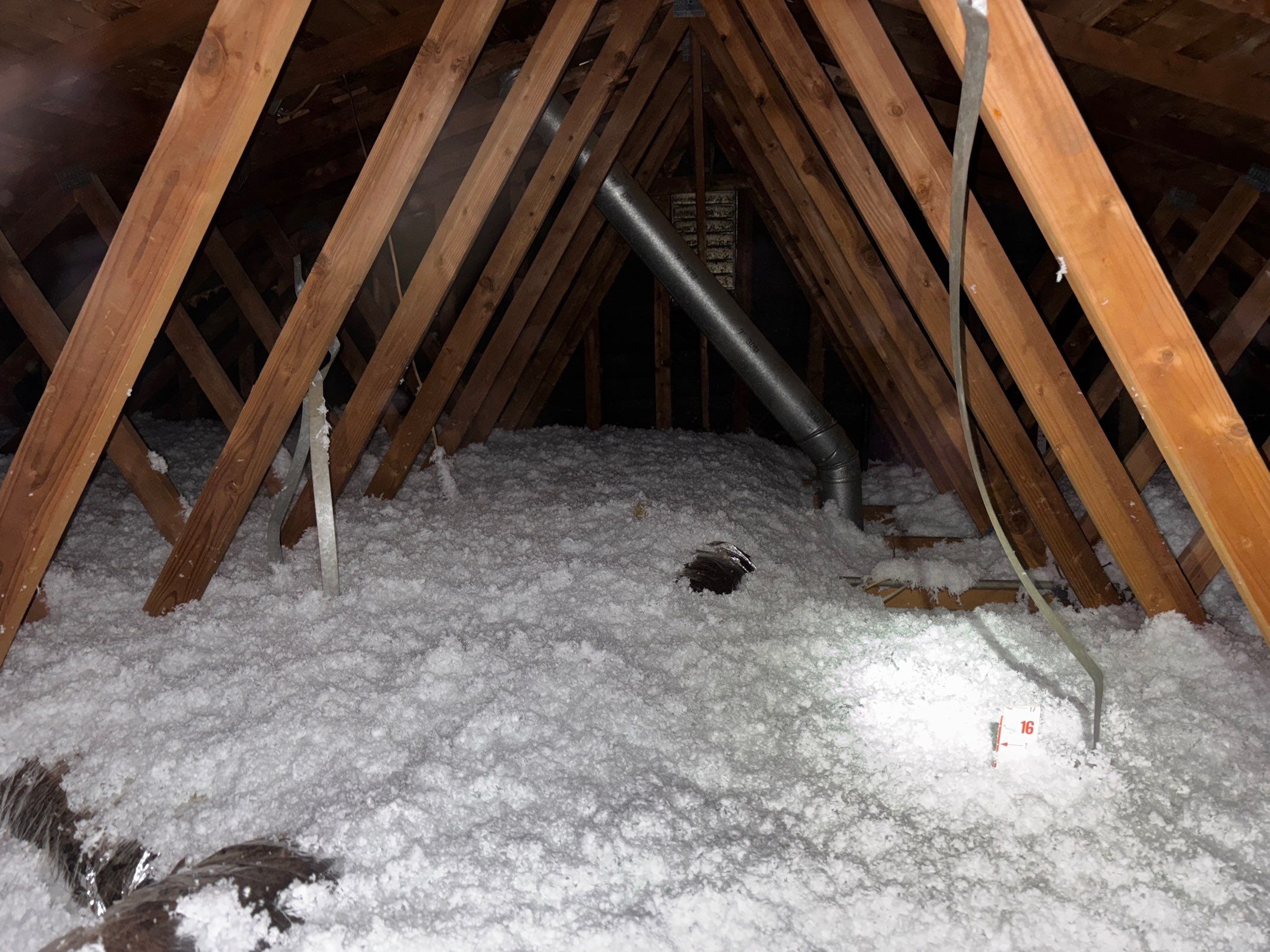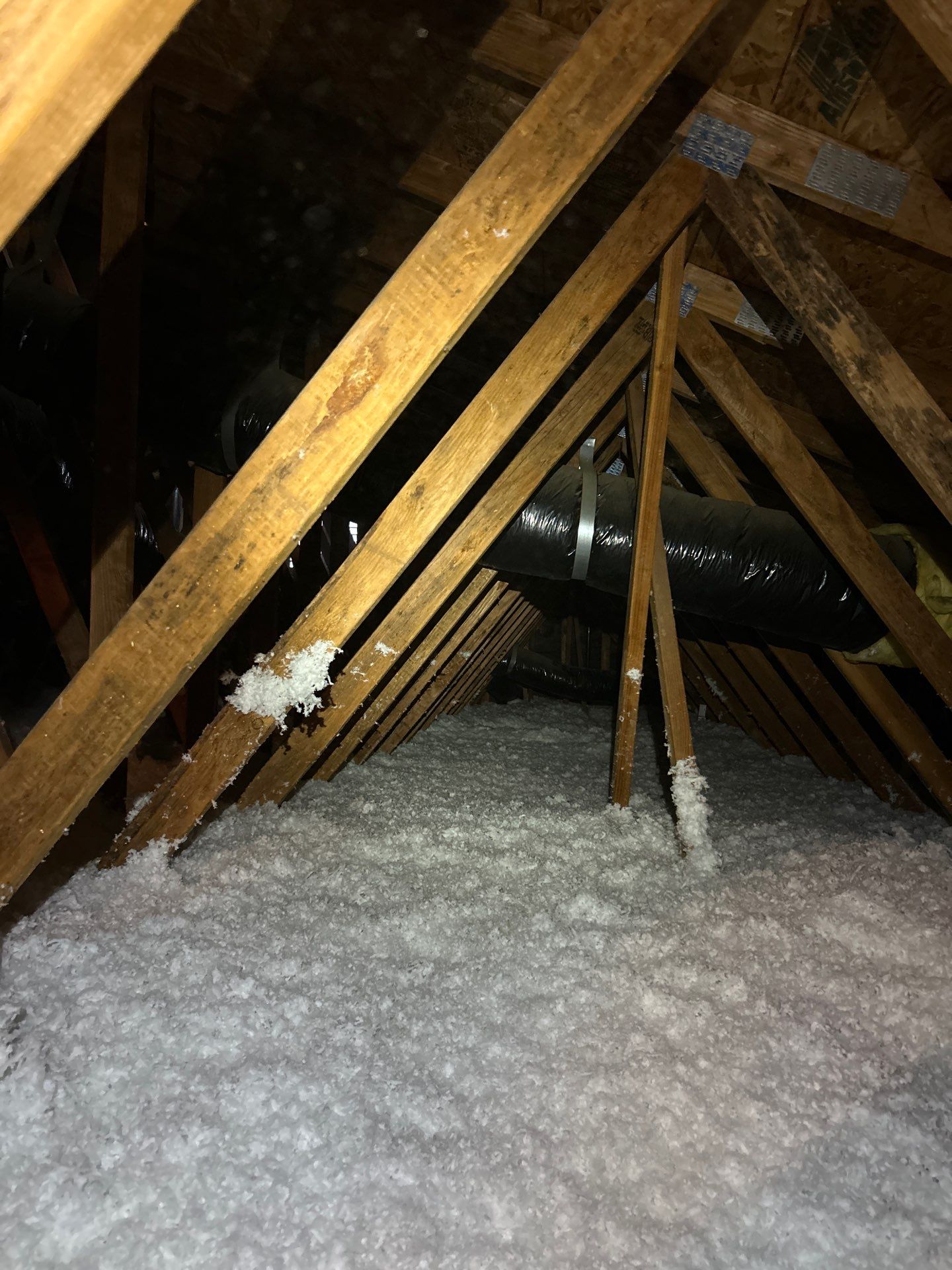Tyson Insulation Before & After Photos
Click on a photo to enlarge.
Brent reached out to us from Clovis because his home wasn’t staying comfortable—especially during those long Central Valley summers. His HVAC system was working overtime, yet the house remained warm and his utility bills were steadily climbing. When we inspected his attic, we discovered only 4 inches of old cellulose insulation, which had settled and lost most of its effectiveness.
To bring his home up to today’s energy efficiency standards, we performed an R38 insulation upgrade. We added 14 inches of premium blown-in fiberglass insulation directly over the existing cellulose. This method increases thermal resistance, significantly improves indoor temperature control, and helps reduce the strain on heating and cooling systems.
By bringing his attic insulation up to the Energy Star recommended R38 level, Brent will now experience better temperature consistency throughout his home, lower energy bills, and greater year-round comfort.
Janet reached out to us from Fresno because her home wasn’t holding temperature well—hot in the summer and chilly in the winter. Her HVAC was running nonstop, and her energy bills reflected it. When we inspected the attic, we found only 3 inches of old cellulose insulation that had broken down over time and lost much of its insulating value. On top of that, there was a radiant barrier that had been poorly and unevenly installed, doing more harm than good by trapping heat instead of deflecting it.
We recommended a full attic restoration to solve the comfort and efficiency issues. First, we removed all of the outdated cellulose insulation and stripped out the ineffective radiant barrier. With a clean attic deck, we thoroughly sanitized the space using Nisus DSV disinfectant to eliminate allergens, bacteria, and any signs of previous rodent activity.
Next, we sealed all visible air gaps—around plumbing penetrations, electrical wires, and top plates—with closed-cell foam. This air sealing process is crucial for preventing conditioned air from escaping the living space and hot attic air from seeping in.
After the space was fully cleaned and sealed, we installed 14 inches of premium fiberglass insulation, bringing Janet’s attic up to the Energy Star recommended R38 level. We also ensured the soffit vents were clear to promote healthy attic ventilation, which helps regulate attic temperature and reduce moisture buildup.
Now, Janet’s home maintains a much more consistent indoor temperature, allowing her HVAC to run less often and her utility bills to stay low—all while enjoying better indoor air quality and year-round comfort.
Jenny reached out to us from Fresno because her home was always uncomfortable—too warm in the summer and chilly in the winter. Her HVAC system was running constantly, but it just couldn’t keep up. Once we got into her attic, it became clear why: the space was in rough shape. There were extensive air leakage points throughout, evidence of rodent activity, and her soffit vents were completely blocked, choking off ventilation.
We recommended a full attic restoration to solve the problem from the ground up. Our first step was removing all of the old, contaminated insulation and thoroughly cleaning out the attic. Because of the rodent activity, we sanitized the entire attic with Nisus DSV, a hospital-grade disinfectant designed to kill bacteria, viruses, and fungi—crucial for improving the home’s indoor air quality.
After sanitizing, we moved on to air sealing. We carefully sealed all penetrations—top plates, plumbing and wiring cutouts, and any gaps around registers—using high-performance closed-cell foam. This drastically reduces the amount of air that escapes from the living space into the attic.
We also addressed the ventilation issue. Blocked soffit vents were preventing proper airflow through the attic, contributing to excess heat and moisture buildup. We cleared the vents to ensure the attic could breathe properly, which helps extend the life of the insulation and the roof itself.
Finally, we installed premium blown-in fiberglass insulation, bringing the attic up to an R38 level—which is the Energy Star recommended standard. This ensures optimal thermal performance, even in the peak of summer or coldest days of winter.
Now, Jenny’s home will stay more temperate year-round, her HVAC system will work less, and the indoor air quality is significantly healthier. This attic restoration is a long-term investment that will pay off in comfort, savings, and peace of mind.
Joanna from Visalia contacted us because her home was constantly struggling with temperature control. During the summer, the rooms would overheat, and in winter, they felt drafty and cold. She was also concerned about her rising energy bills. We came out to inspect her attic and quickly found the issue: her attic only had old R19 batt insulation, which is far below what’s needed for optimal energy efficiency in our Central Valley climate. On top of that, we found signs of rodent activity and general contamination.
We recommended a complete attic restoration to fully resolve the issue. We started by removing the existing R19 batts, which were dirty and underperforming. After clearing out all insulation and debris, we sanitized the attic using Nisus DSV, a professional-grade disinfectant that eliminates bacteria, viruses, and odors—especially important given the rodent contamination.
Next, we focused on air sealing the attic. Using closed-cell foam, we sealed all common leakage points like top plates, wire and pipe penetrations, and HVAC register openings. Proper air sealing ensures that conditioned air stays in the living space, rather than escaping into the attic.
To complete the project, we installed a fresh layer of blown-in premium fiberglass insulation, bringing the attic up to the Energy Star recommended R38 level—more than doubling the insulation performance of what she previously had.
Now that the attic is restored, Joanna’s home will stay cooler in summer, warmer in winter, and more energy efficient year-round. Plus, the improved air sealing and sanitation mean she’ll enjoy better indoor air quality and a quieter, cleaner home environment.
Jeff contacted us from Clovis because his home was struggling to stay cool during the peak of summer. Even with the AC running non-stop, the indoor temperature remained uncomfortable. When we inspected his attic, we discovered he only had about 5 inches of existing fiberglass insulation—far below what’s recommended for homes in the Central Valley.
To solve the issue, we performed an insulation upgrade by blowing in additional premium fiberglass insulation. We added enough to bring the total depth up to 14 inches, which achieves the Energy Star recommended R38 level for our region. This upgrade helps significantly reduce heat transfer through the attic, allowing Jeff’s HVAC system to work more efficiently while keeping his home much more comfortable.
Thanks to the improved insulation, Jeff can now look forward to lower energy bills, better indoor comfort, and improved year-round temperature control.
